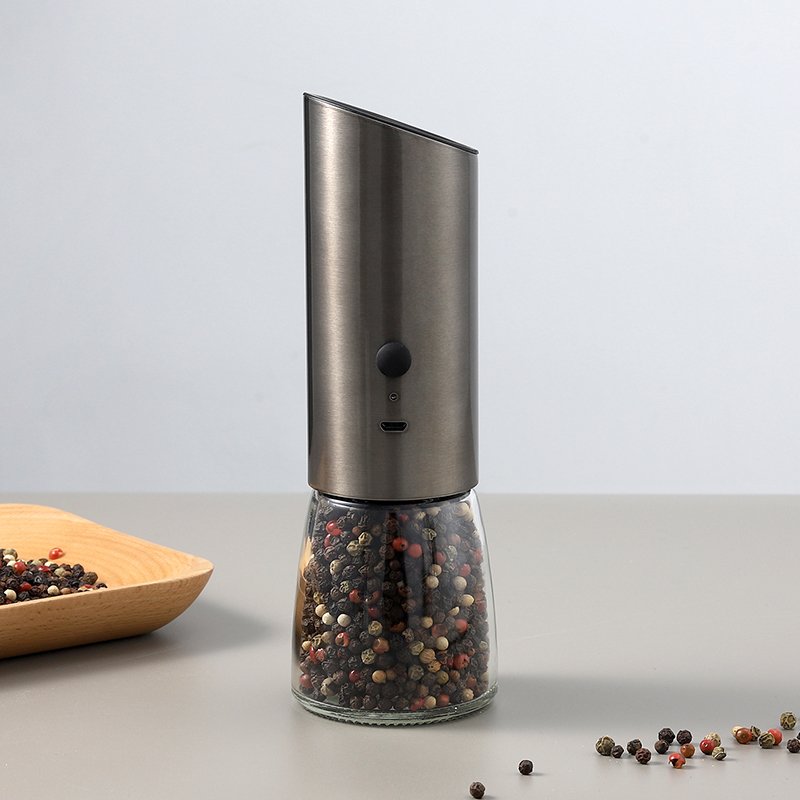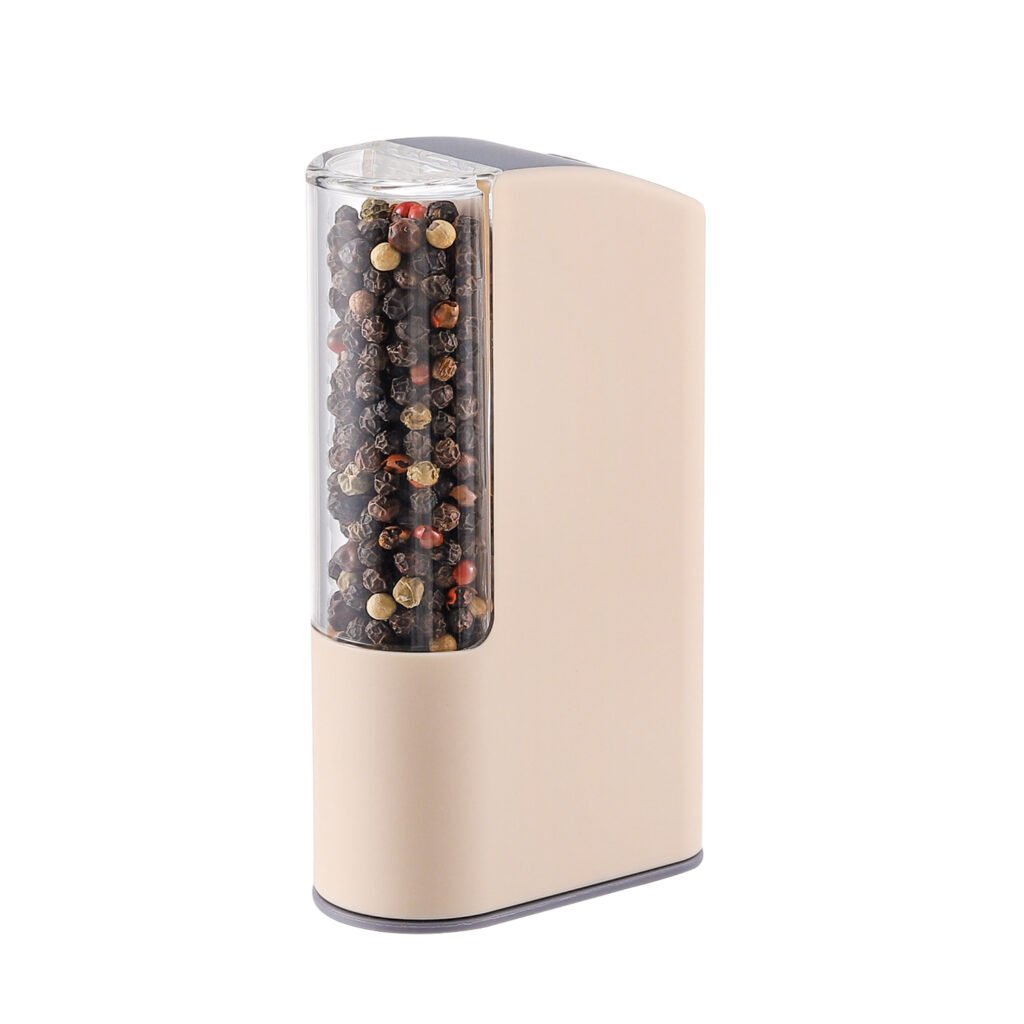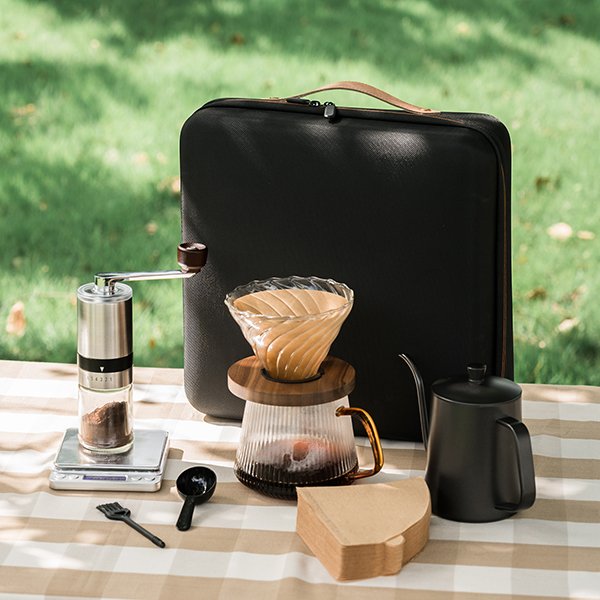
A salt shaker dispenses salt that is already ground. A salt grinder crushes salt crystals to create fresh seasoning. This difference is significant because it alters the flavor and texture in food.
Many cooks prefer to use an electric salt grinder or battery operated salt and pepper grinders because they are user-friendly. Some individuals choose an electric pepper and salt grinder for its convenience and consistent results.
Key Takeaways
Salt shakers give out salt that is already ground. Salt grinders crush salt crystals to make the salt taste fresher. Using a salt grinder lets you pick how big the salt pieces are. This can make your food taste and feel better. Cleaning salt shakers and grinders often stops them from getting stuck. It also helps them work well. Pick the right tool for how you cook. Shakers are fast to use. Grinders let you be more exact. Think about what the tools are made of and how they look. This helps you choose ones that last long and are easy to use.
Functional differences between salt shakers and salt grinders

How salt shakers dispense pre-ground salt
Salt shakers hold salt that is already ground up. People put fine salt inside, and it comes out through small holes. Salt shakers work best with dry salt that pours easily. You just tip and shake the shaker to add salt to food. This is a fast and simple way to season meals. Salt and pepper shakers are common on tables for easy use. The holes in salt shakers are bigger than in pepper shakers because salt grains are larger.
How salt grinders process and release fresh salt
Salt grinders crush big salt crystals into smaller pieces. Inside the grinder, there are hard chunks of salt. When you twist or press the grinder, gears break the salt apart. These gears can be made of ceramic, metal, or nylon. You can pick how fine or coarse you want the salt to be. Freshly ground salt falls right onto your food. Using a salt grinder gives a different feel and look than a salt shaker.
Impact on flavor, texture, and freshness
Salt grinders change how salt feels on food. Freshly ground salt looks nice on top of dishes. The size of the salt pieces changes how it tastes and feels. Big pieces add crunch, while small ones mix in easily. Grinding salt does not make it fresher or smell better than salt from a shaker. The main change is in how it looks and feels. Salt shakers give smooth, fine salt that melts fast. Salt grinders let cooks choose how their food looks.
Tip: Chefs like to use kosher salt because it is coarse. This helps them control how much salt they use and keeps them from adding too much.
Common issues like clogging and uneven dispensing
Salt shakers can get clogged if the salt gets wet. Salt grinders might jam if salt crystals block the gears. Sometimes, salt does not come out evenly, which can be annoying. The table below gives tips for cleaning and how often to clean salt tools:
Usage Level | Cleaning Frequency |
|---|---|
Daily or Weekly Use | Once a month |
Occasional Use | Every three months |
Salt Mixes/Moisture | Clean more often |
You can tap the grinder to help loosen stuck salt. A soft brush can clean out powder inside the grinder. Taking apart the grinder lets you check for wet spots and clean every part. Cleaning often helps salt shakers and grinders work well.
Differences in control and precision
Salt grinders let cooks control how much salt they use. You can change how big or small the salt pieces are. Salt grinders stop salt from sticking together, so it pours out smoothly. A few turns of the grinder give just the right amount of salt. This helps keep food from getting too salty. Salt shakers do not let you control the salt as much. The difference is clear when cooks want to pick the perfect amount of seasoning.
Salt grinders let you pick how coarse the salt is, so you can season food your way.
Grinding salt keeps it from sticking, so it pours out evenly.
Turning the grinder a few times gives you just the right amount, so you do not use too much.
Salt grinders are good for cooks who want to change how they season food. Salt shakers are best for quick and easy use. The gears in salt grinders make them useful for many kitchen jobs.
Materials and design in salt and pepper shakers and mills

Typical materials for salt shakers and their pros and cons
Salt and pepper shakers are made from ceramic, stainless steel, or plastic. Ceramic does not rust and keeps the taste pure. Stainless steel is strong and looks modern. Plastic is light and costs less money. Each material has good and bad points.
Material | Advantages | Disadvantages |
|---|---|---|
Ceramic | Rustproof, long lifespan, preserves flavor | Less sharpness than steel |
Stainless | Durable, sharp grinding, modern appearance | Can rust in humid environments |
Plastic | Lightweight, affordable, many designs | Less durable than ceramic or steel |
Common grinder materials like ceramic and nylon
Grinders use ceramic or nylon inside to crush salt or pepper. Ceramic grinders do not rust and stay sharp for a long time. Nylon grinders also do not rust but wear out faster. Both types work well, but ceramic lasts longer.
Design features for ease of use and durability
Some shakers have clear bodies so you can see how much is left. Stainless steel tops make them strong and stylish. You can change the grind size to pick the texture you want. Grips that fit your hand make them easy to hold. Simple designs help you clean them better and keep them safe to use.
Tip: Pick shakers with settings you can adjust. This gives you more control when adding salt or pepper.
Aesthetic and kitchen style considerations
Salt and pepper shakers come in many looks. Some are bright or have cool shapes. Others have painted patterns or special designs. These choices make your kitchen look fun. Grips that fit your hand and built-in lights help you cook better. Fancy shakers can match any kitchen style.
How material choice affects maintenance
The material changes how you clean salt and pepper shakers. Ceramic is easy to care for and does not rust. Stainless steel needs careful cleaning so it does not rust, especially with salt. Plastic is easy to wash but can break over time. Wood shakers need gentle cleaning so they do not get ruined. Strong materials mean you do not have to replace them often, which is better for the planet.
Maintenance and care for salt grinders and shakers
Cleaning tips for salt shakers to prevent clogging
Cleaning your salt shaker often helps it work well. This stops salt from sticking inside. Use a soft, damp cloth or a Q-tip for small spots. Mild dish soap can clean tough stains, but do not soak the shaker in water. Sticky spots may need a little Pam, butter, or rubbing alcohol. Clean ceramic glazed shakers with gentle cleaner. Cold paint and chalkware need extra gentle care. A dry, soft toothbrush is good for cleaning delicate surfaces.
Preventing moisture and salt clumping
Moisture makes salt stick together and block the holes. To keep salt dry, cooks put a few grains of uncooked rice in the shaker. A soda cracker or dried parsley leaves at the bottom also help. Coffee beans can go in the salt and will not change the taste. For grinders, silica gel packets soak up extra moisture, but do not let them touch the salt. Store grinders in a cool, dry place and use airtight lids to keep out humidity.
Refilling and troubleshooting common issues
When you refill a salt shaker or grinder, do not overfill it. Use the right kind of salt or spice to stop jams. Follow the instructions for using salt and pepper mills to avoid damage. Clean and adjust the grind setting often to keep them working well. If salt will not come out, tap the shaker or change the grinder setting to fix it.
Longevity and replacement tips
Salt grinders and shakers last longer if you take care of them. The table below lists common problems and how to fix them:
Maintenance Challenge | Description |
|---|---|
Cleaning | Clean often to stop jams and clogs. |
Avoiding Clogs | Do not fill too much; use dry salt to stop blocks. |
Battery Care | Check batteries in electric grinders so they work well. |
Unusual Noises | Listen for scratchy sounds that mean something is stuck inside. |
Tip: Keep salt shakers and grinders away from heat and moisture. This helps them last longer. Replace them if cleaning does not fix problems or if parts wear out.
Choosing the right salt grinder or shaker for your kitchen
Factors to consider for your cooking style
Picking a salt shaker or salt and pepper mills depends on how you cook. Some people want to add salt fast at the table. Others like to control how fresh and chunky their salt is. The table below lists things to think about:
Factor | Description |
|---|---|
Usability | Pick mills that twist easily, refill fast, and clean up well. |
Size | Small mills fit home kitchens. Big ones are good for families or busy cooks. |
Material | Salt can damage some metals. Ceramic works well for both salt and pepper. |
Coarseness Settings | Adjustable mills let you pick fine or chunky salt for recipes. |
Model Type | Regular mills drop salt from the bottom. Upside-down models keep counters clean. |
Manual vs Electric | Manual mills need twisting. Electric mills work with a button. |
You should also check what the mill is made of and how it grinds. Strong materials like ceramic or stainless steel last longer. Features like one-handed use and fill windows make seasoning easier.
Comparing manual and electric salt grinders
Manual salt and pepper mills give you more control. You can pick how fine or chunky the salt is. They are quiet and easy to carry. But you have to twist them by hand. Electric mills grind salt with just a button. They are fast and give the same result every time. Some electric mills need batteries or charging. They can be loud. The table below shows how they compare:
Grinder Type | Ease of Use | Control Over Grind Size | Durability | Portability | Noise Levels |
|---|---|---|---|---|---|
Manual Grinder | Needs twisting | High precision | Very durable | Easy to carry | Quiet |
Electric Grinder | Button press operation | Consistent | Durable | Less portable | Can be noisy |
Electric mills usually cost more at first. Rechargeable ones can save money later. Their value comes from being easy to use, strong, and working well.
Chefshere Electric Salt Grinder as an innovative option
The Chefshere Electric Salt Grinder is different from other mills. You can use it with one hand while you stir or hold a pan. You can change how fine or chunky the salt is. It has a light so you can see the salt, even if the kitchen is dark. It charges with batteries or USB/Type-C and works for up to 90 minutes. Chefshere uses good materials and is known for quality kitchen tools.
Many people like the Chefshere Electric Salt Grinder because it is easy to use and feels good in your hand. They like how fast it grinds and how you can adjust the salt. The automatic feature lets you season food with one hand. Some people say it takes time to learn the gravity feature, but most find it useful.
Salt and pepper mills like the Chefshere Electric Salt Grinder are handy, easy to control, and look nice. They work for many cooking styles and kitchens. They are a smart pick for cooks who want fresh salt every time.
Salt shakers are fast and spread salt evenly. Salt grinders crush salt crystals for fresh taste and texture. Picking the right tool helps you save time and cut down on waste. It also makes your kitchen look better. The table below shows how new grinders make cooking easier:
Benefit | Explanation |
|---|---|
Time-saving | Automatic grinders season food quickly, so cooks can do more things. |
Waste reduction | They give just the right amount of salt, so food tastes better. |
Aesthetic appeal | Cool designs make your kitchen look nicer. |
Home cooks should look at their kitchen tools and think about getting new ones. Here are some steps:
Think about if automatic grinders work for you.
See if you like grinders that let you change how fine the salt is.
Take care of your tools to keep them working well.
FAQ
What type of salt works best in a salt grinder?
Coarse sea salt or Himalayan pink salt works best in a salt grinder. Fine table salt can clog the grinder and may not grind evenly.
Can you use a salt grinder for pepper or other spices?
Most salt grinders can only handle salt. Peppercorns and other spices may damage the grinding mechanism. Always check the manufacturer’s instructions before using other spices.
Why does salt sometimes clump in a shaker?
Moisture in the air causes salt to clump. Adding a few grains of uncooked rice to the shaker helps absorb moisture and keeps the salt flowing.
How often should you clean a salt grinder or shaker?
Clean salt grinders and shakers once a month for regular use. If you notice clogs or residue, clean them sooner. Regular cleaning helps prevent buildup and keeps the tools working well.






